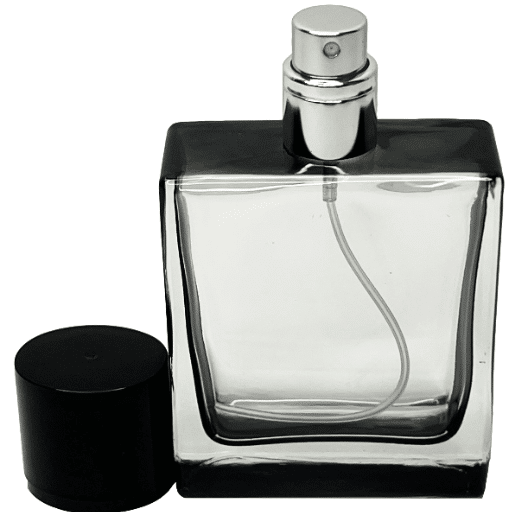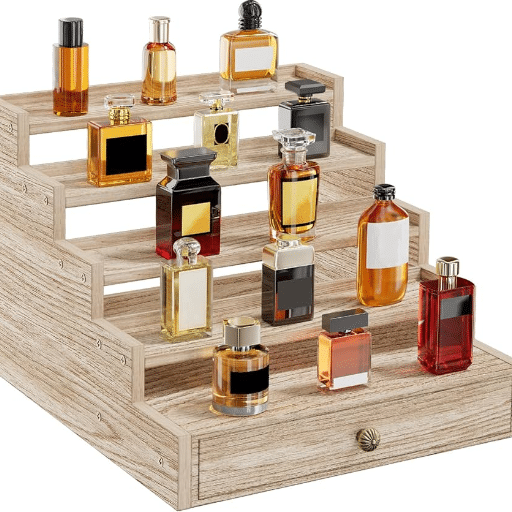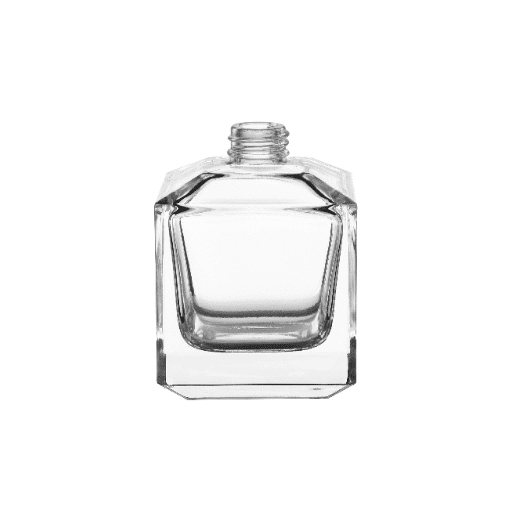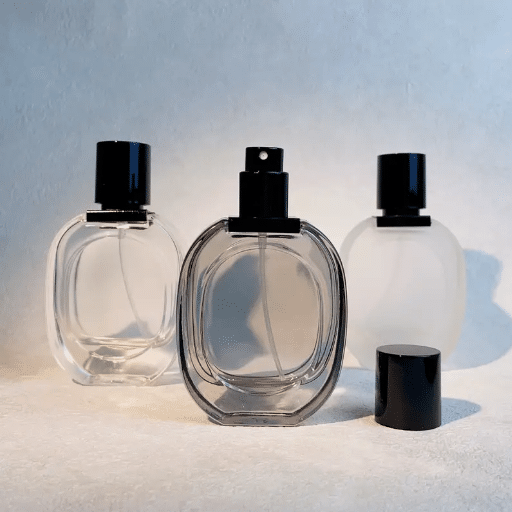After gardeners, perhaps it is perfume collectors who are wondering about the meaning of perfume bottle sizes? Determining the sizes of perfume bottles can be tedious and confusing, especially with measurements in millimeters and ounces. Choosing between a small bottle for your purse or a large bottle for your grand collection, being sure of your perfume size will save you from an expensive blunder. This guide lists all perfume bottle sizes and provides an easy-to-use chart for selection. By the time you finish this post, buying a bare minimum bottle size suitable for your lifestyle, taste, and budget shall be second nature to you.
Introduction to Perfume Bottle Sizes
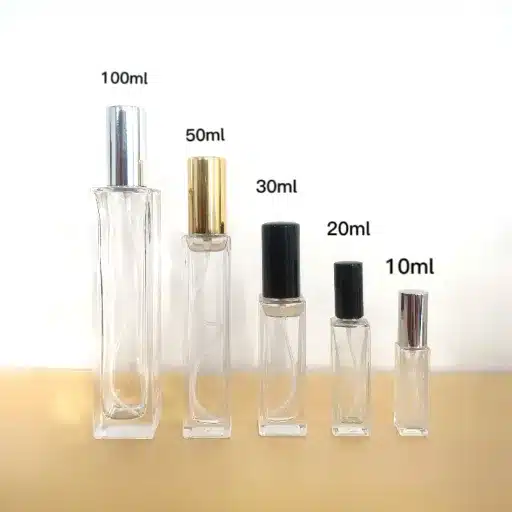
Surrounded by perfumes, one is bewildered at the variety of sizes in milliliters or fluid ounces they come in. Most commonly, sizes are available in 30 mL (1 fl oz), 50 mL (1.7 fl oz), and 100 mL (3.4 fl oz). The tug of war begins with smaller travel sizes, such as 5 mL and 10 mL, while the big names, like 200 mL, are favored by fragrance addicts. Knowing which size is which will help with convenience, usage, or price factors.
The Importance of Understanding Perfume Bottle Sizes
When considering the number of sizes available, one can be pretty sure of making an informed decision for each fragrance purchase. For example, 5 mL or 10 mL, which is particularly suitable when trying a new scent before committing to a larger bottle of that perfume; ideal for setting off on a search for the fragrance you wish to call “signature”. A medium-sized bottle of 30 mL or 50 mL is a perfect compromise between portability and value, offering just enough product to apply regularly without burdening too much. Conversely, larger bottles of 100 mL or more are generally priced per milliliter at their best, tailored to those who already have a favorite scent and use it regularly. Since airlines allow only 100 mL per liquid item in carry-on luggage, restrictions must be taken into consideration when packing for a trip. Recognizing these factors is necessary for a successful fragrance shopping experience and for determining the size of the bottle that best fits your needs and lifestyle.
Overview of Standard Perfume Bottle Sizes
Check out the usual sizes available, including some larger and smaller options. A few standard sizes include the 30-mL (1 oz) bottle, 50-mL (1.7 oz), and 100-mL (3.4 oz) bottles, while a 10-mL (0.33 oz) bottle is considered a suitable travel size for everyday use. For more volume, some fragrance designers have also gone as large as 200 mL (6.8 oz). Of course, different-sized bottles are suitable for various purposes; smaller ones are ideal for getting a feel for a new scent or for carrying. From the large ones, you can get a better deal for your daily favorites. Adopting these standards enables buyers to make informed decisions based on their consumption habits, travel needs, and price considerations.
Why Size Matters in Perfume Selection
The selection of perfume sizes is linked to one’s lifestyle and preferences. Small bottles, such as 10 or 30 mL, are ideal for those who enjoy trying various scents without committing to a full-sized bottle for auto-refills. They are also excellent for traveling, carrying in a small purse, or even in one’s pocket for an occasional upgrade during the day. The large bottles, 100 mL and above, are even more suited for signature fragrances worn daily and are more reasonably priced per milliliter, resulting in less frequent refills. This array of size options ensures that consumers can find a bottle best suited to their usage style, taking into account both affordability and practicality.
Comparative Analysis and Size Chart of Perfume Bottles
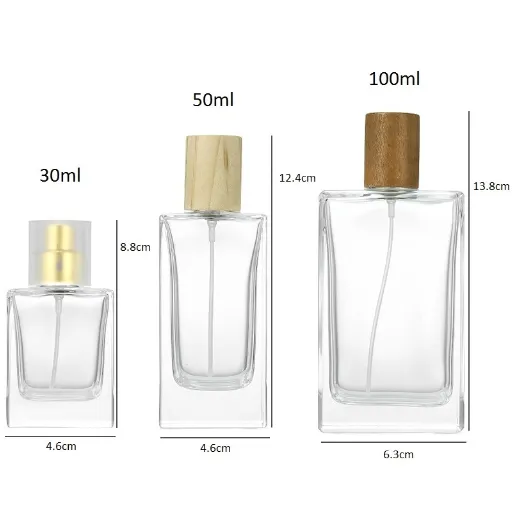
While a wide range of sizes can be found, they all cater to very specific needs and preferences. The size and pricing guide below will be explained:
| Bottle Size | Volume (mL) | Approximate Usage | Best For |
|---|---|---|---|
| Miniature | 5-10 mL | 1-2 weeks | Sampling or travel |
| Small | 15-30 mL | 1-2 months | Occasional use or portable touch-ups |
| Medium | 50-75 mL | 3-6 months | Regular, versatile use |
| Large | 100 mL+ | 6+ months | Daily-use signature scents |
Key Considerations:
- Smaller bottles cater to switching between fragrances often and require convenience when on the go.
- Larger bottles are on the other end of the spectrum in terms of value, with packaging that is more relevant over time for frequent use.
- Consumers can take advantage of this to maximize value in their personal usage, ultimately achieving complete satisfaction.
Detailed Perfume Bottle Size
Understanding the different sizes of perfume bottles helps them to suit individual needs and habits. Standard sizes range from 30 mL to beyond 100 mL, thus fulfilling all requirements. A 30 mL bottle would be perfect for preparing for occasions or for building a fragrance collection that advertises numerous scents. As a result, you can test several scents without committing a large amount of volume. Then, a bottle of 50-75 mL would provide serviceability against hold, made ready for occasional application or easy signature acts several times a week. When it comes to regular fans or lovers of a particular scent, an option of 100 mL or more provides extended wear and better value over a longer period. Research suggests that approximately 50 mL lasts 3-4 months with moderate use, while larger bottles can survive for more than 6 months, depending on the application frequency. Smaller-sized bottles, while great for travel, can be a burden when it comes to replacement until they are used for daily applications.
Dimensions and Examples of Popular Perfumes
One significant variation lies in the dimensions of the bottles, all of which are surmised: the gray point of style pen in juxtaposition with a fine point of practical applications. For instance, the Eau de Parfum bottle of Chanel No. 5 (100 mL) typically measures 3.5 by 1.5 by 5.5 inches, much appreciated for its Tibira-like classic chintz. Likewise, a 100 mL Eau de Toilette bottle of Dior Sauvage appears in a cylindrical form, measuring approximately 2 inches in diameter by 5 inches in height. Considerably upright and convenient at the same time, with a hint of modernism on the side; small-sized ones, such as a 30 mL bottle of cologne from Jo Malone London, were designed with travel in mind, measuring barely 1.2 by 1 by 3.5 inches, ideal for oily, on-the-go applications. This great difference accommodates every conceivable aesthetic and eclectic pattern of the population, making it easier to choose whichever one wins in style, portability, or storage.
Visualizing Different Sizes of Perfume Bottles
Such density and dimensions of the perfume bottles may have been intended, depending on the occasions and desires of the end-user. For example, a larger bottle of Chanel No. 5 Eau de Parfum (100 mL) serves as a permanent vanity item measuring approximately 2.5 x 2.5 x 5 inches, melding brilliant design with sheer utility in the long term. On the contrary, smaller variants like Dolce & Gabbana Light Blue Eau de Toilette (25 mL) are designed to be compact, measuring approximately 1.2 x 1.2 x 3 inches in dimensions. These are perfect for throwing into handbags or carrying along on journeys. Considering these versatile packaging options reveals how volume encompasses both portability and storage, catering to diverse requirements of elegance in every size available.
Choosing the Right Size for Your Needs
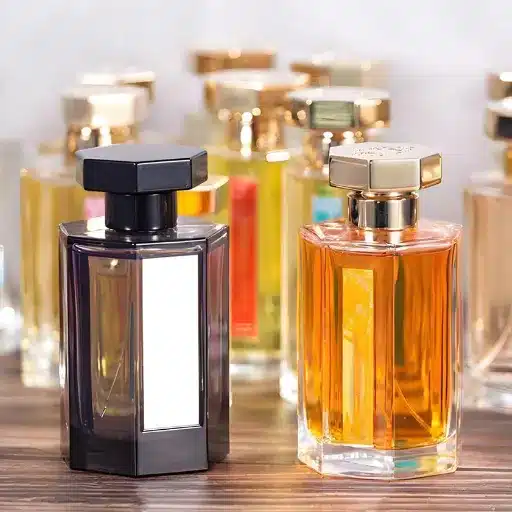
In selecting a proper size, one must consider lifestyle activities and relevant usage. Bigger bottles are the best value and provide long-lasting use for everyday, on-demand applications at home. Smaller sizes are better suited for an active lifestyle that involves packing, traveling, and carrying one’s fragrance in a purse, small bag, or backpack. From use scenarios and frequency assessments, the ideals of portability and actual longevity are evaluated.
Travel-Friendly Perfume Options
Traveling miniatures are the stuff of portability and durability. Miniature sizes from 10 to 30 milliliters embody convenience, functioning as the cutest travel-sized spray perfumes that qualify for carry-on luggage use under TSA regulations. Solid perfumes, usually stored in compact tins or cases, provide nearly spill-proof application. Refillable travel atomizers are great to fill with best-loved scents without hauling a whole bottle around. Many prominent perfume brands continue to launch travel-size versions of their popular fragrances, making it easy to carry a variety of fresh scents on the go.
Daily Use vs. Gifting: Selecting the Perfect Size
| Key Point | Daily Use | Gifting |
|---|---|---|
| Purpose | Personal, regular application | Thoughtful surprise for others |
| Size | Compact, often smaller bottles or travel-size | Standard or gift sets |
| Packaging Style | Simple, practical for portability | Elegant, decorative presentation |
| Budget | Economical to suit daily needs | Flexible, based on recipient and occasion |
| Variety | Focus on personal preference | Popular, universally appealing fragrances |
| Exclusivity | Common, easily available | Luxury or limited-edition options |
| Refillable Options | Commonly available for cost-effectiveness | Rarely given as a gift |
| Customization | Minimal, cost-conscious | Often personalized with engravings or labels |
| Longevity of Use | Frequently replenished due to daily use | Designed to last longer as a keepsake |
| Ideal Recipients | Individuals or yourself | Friends, family, or colleagues |
Practical Tips for Choosing a Perfume Bottle Size
1. Assess Your Usage Frequency
Perfumes are often purchased in larger-sized bottles (100ml and above) so that you can have enough of the fragrance to last longer. Smaller sizes, on the other hand, are more suitable for occasional use or travel, typically ranging from 30ml to 50ml.
2. Consider the Shelf Life
Most perfumed products will last 3 to 5 years, provided they are stored correctly and kept away from heat and direct sunlight. For fragrance lovers, having a few fragrances in rotation means smaller bottle sizes will reduce wastage due to expiration.
3. Account for Portability Needs
Travel-size bottles (10ml and 15ml) are suitable for travel. While in the car, they fit splendidly inside handbags or small suitcases, covering up midday or even allowing travel to hotels.
4. Test and Commit Gradually
Purchase a mini or sample size if you’re testing a fragrance for the first time before committing to a larger bottle. One may say this is a good way to try if the scent suits one’s personality without a heavy investment being made.
5. Purpose and Gifting
One thing is for sure, though: practicality counts. That’s just another way of saying “look for your everyday use.” Nevertheless, if the perfume is a gift, always consider and appreciate the finer packaging or perhaps a limited-edition design, which is often available in smaller or more specialized sizes.
6. Cost vs. Value Analysis
Purchasing larger bottles for a better value, resulting in a lower cost per milliliter, is often the case. Take, for example, a 100ml bottle will sell for less per ml than its smaller counterpart of 30ml. Analyze your earnings, as well as how much you actually use perfume.
Impact of Size on Pricing and Value for Money
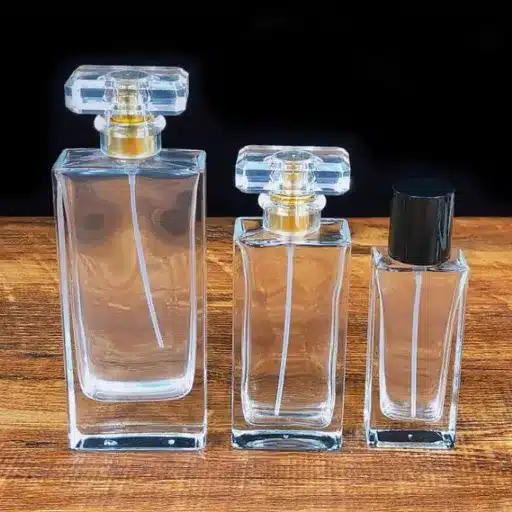
When discussing perfumes, bottle size is a significant consideration in determining price and value for money. Larger sizes tend to have the lowest cost per milliliter and thus favor regular users; they would primarily use a bigger bottle. For instance, a 100ml bottle is more expensive upfront but actually cheaper in the long run than buying multiples of smaller bottles, such as 30ml options, if you do the math. Smaller bottles might be chosen over the latter if your choice is to wear it infrequently, enjoy the variety of scents, or need something that you can carry with you. Balance yourself by measuring your usage, so you can allocate your budget to what matters most; this is your decision.
Understanding the Relationship Between Perfume Quantity and Cost
Depending on the quantity purchased, perception of brand prestige, and concentration of fragrance oils, several factors can influence the price of perfumes. Nevertheless, bigger bottle sizes, while requiring a bulky initial purchase, would result in a lower cost per milliliter. This is an instance where purchasing a 100ml bottle would provide far better value than buying three 30ml bottles each. Of course, this is considering your fragrance choices and how much you use them. Those who like to interchange different scents may find smaller bottles more functional, although they are costlier. And this, in itself, is a fundamental comprehension for any buyer to consciously choose a scent suited to his or her liking and budget: pure parfum, the highest concentration, is always costlier than less concentrated versions, such as eaux de toilette, since it is the more intense concentration formulation and hence lasts longer.
Evaluating Value Based on Size and Usage
To gauge a fragrance’s worth, one must consider the balance between size, frequency of use, and cost per ounce. Larger sizes tend to provide better value for the price per unit of volume. Still, they may not be suitable for users who are infrequent applicators or prefer switching among various scents. Thus, smaller sizes, more often than not, have a higher price tag but come with the advantage of being very convenient for users who plan on traveling or enjoy seasonal fragrances. Moreover, from what has recently come to light, longevity in itself and the type of formulation carry significant weight in value judgment. For instance, the more concentrated the formulation — such as parfum — the fewer applications might be needed throughout the day, which would balance out the more deliberate use over time. Combining these factors, the user may begin to speculate and decide which investment truly best accommodates their usage behavior and lifestyle.
Cost-Effective Options for Different Perfume Sizes
To choose an economic perfume size, an understanding of the selected frequency and preferences is required. Larger bottles, such as 100ml or 150ml options, typically offer a better price per milliliter for individuals who regularly use their signature scent. On the contrary, smaller sizes, such as 30ml or 50ml, are favorable for those seeking variety or are new to a particular fragrance, minimizing the risk of waste in case preferences change in the future.
Sizes 5ml to 15ml are ideal for travel, providing enough power for a couple of extra spritzes throughout the day. These sizes often come in sets, allowing one to try out multiple scents before committing to a full bottle. Comparing the price per milliliter, coupled with lifestyle factors, will undoubtedly give fragrance buyers a winning edge in maximizing their investment in size.
Conclusions and Summary of Key Points
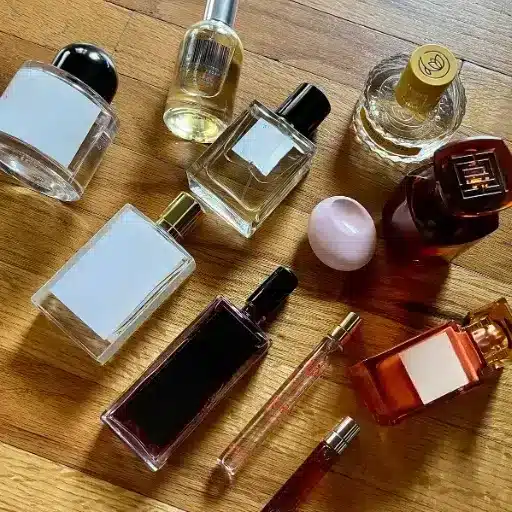
- Smaller fragrance sizes, such as travel-size bottles, offer flexibility to reduce waste in case scent preferences change.
- Travel-size bottles offer great convenience for carrying around.
- Fragrance sets offer the option to purchase multiple scents for evaluation before committing to a full-size bottle.
- Compare the price per milliliter with lifestyle needs to make smarter buying decisions.
Final Thoughts on Choosing Perfume Sizes
The choice of perfume size ultimately depends on one’s lifestyle, tastes, and habits. When trying out a new fragrance or any old one, it’s best to use smaller options, such as travel-size bottles or sampler sets, allowing users to hold a bit of variety with the least waste potential. Secondly, large bottles of concentrate may prove very cost-efficient for established, go-to scents that have presumably become part of daily use. Another factor affecting consumers’ choices is the current trend towards eco-friendly packaging. This is encouraging brands to adopt refillable packaging solutions that meet sustainability parameters. Use frequency, cost per milliliter, and environmental impact to make the best selection that suits one’s setting, whether personal or global, on the scale of personal or global attitude.
Encouragement to Explore and Experiment
A major exploration and fulfilling one can allow a person to express their personality and preferences in unique ways. With innumerable scent profiles available-from warm and woody to fresh and floral-trying options can help unearth hidden treasures that might resonate at a deeper level. Several brands have facilitated this journey through discovery sets or smaller sample sizes, allowing individuals to experiment even before committing to larger bottles. Additionally, a solid understanding of emerging trends in spheres of influence and ingredient trends in contemporary concoctions can spark fresh ideas and help you appreciate the artistry behind modern perfumery. Regardless of whether you are firmly rooted in the classics or leaning towards the niche, experimentation is an avenue for release into the olfactory realm and enrichment of the fragrance experience.
Reference Sources
-
A Comprehensive Guide to Perfume Bottle Sizes
This guide provides an extensive overview of perfume bottle sizes, ranging from small 1-2 mL samples for testing fragrances to large 250 mL bottles for shared or favorite scents. It emphasizes the versatility of sizes to cater to different needs and preferences. -
Understanding Perfume Bottle Sizes – Gidea PAC
This article offers a detailed perfume bottle size chart, explaining the dimensions and uses of various sizes. For instance, it highlights compact medium sizes like 2.0 oz (60 mL) and generous medium sizes like 2.5 oz (75 mL), helping users choose the right size for their needs.
Frequently Asked Questions (FAQs)
Q: What are the standard sizes of perfume bottles?
A: Many different sizes of perfume bottles exist, with the standard sizes being 1 oz, 1.7 oz, and 3.4 oz, catering to varied groups of users. One-fluid-ounce bottles of perfume are usually considered travel-friendly, while 3.4-ounce bottles are typically standard for day-to-day use. A larger bottle of about 100 ml offers greater value for the regular user. Knowing these sizes should also give you an idea about the longevity of a bottle, depending on your fragrance usage. Choosing would entirely depend on your personal preference and the way you wear perfume.
Q: How to choose the right size for your fragrance?
A: Consider your lifestyle regarding how often you apply perfumes before considering which size suits you best. If you use perfume every day, getting a bottle that lasts longer would serve you well, providing better value and ensuring you don’t run out of your favorite scent. Smaller bottles will provide you with the variety you desire for perfume enthusiasts who like switching between scents. Additionally, exploring perfume bottle sizes would be an interesting option, allowing you to avoid committing to a larger bottle. In essence, your preferred bottle size for perfume should complement your usage habits and choices.
Q: What is a perfume bottle size chart?
A: In essence, a bottle size chart is an aid, displaying the standard sizes of bottles available on the market. Measurements in ounces and milliliters are typically included, allowing for a simple comparison of the different options. For a dress-up example, the size chart would reflect that a 1-oz perfume bottle contains 30 ml in keeping with the approximate conversions, and, conversely, a 3.4-oz bottle would hold some 100 ml. Knowing the relation between the amount of perfume and price will assist you in making your choice. By looking at a perfume bottle size chart, one may attain an idea of what sizes are right for their needs or perhaps even more to their liking when forced to make an actual choice.
Q: What are the benefits of different sizes of perfume bottles?
A: There are so many advantages of various sizes of perfume bottles serving different purposes. The smaller bottles are more travel-friendly, allowing one to carry their favorite scent without extra baggage. Larger bottles, on the other hand, attract a lower price per ounce, thus being a favorite for the daily users. Having different bottle sizes within your collection also allows time for sampling variations on a limited scale. This opens the way to great perfume experiences; you simply enjoy scents that resonate with your mood or occasion. Understanding these benefits can help sharpen your thoughts on perfume purchases.

